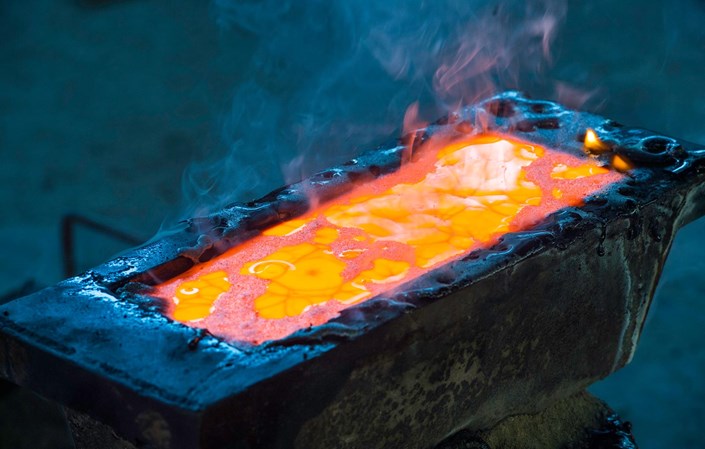ZIMBABWE'S gold mining firms are planning to ramp up production in the next few years at a time the majority of companies in the country are struggling due to a deteriorating economic environment.
This is despite weakening yellow metal prices on the international market over the past five years, from a high of US$1 798 per ounce in February 2012 to around US$1 303 per ounce in October 2017.
Metallon Corporation, one of Zimbabwe's largest gold producer, is expecting to bounce back from a low production figure of 94 212 ounces last year and increase its 2017 production by nearly 22 percent.
The group's chief executive officer, Ken Mekani, said his company was looking "forward to even greater improvements in 2017 as we target approximately 115 000 ounces of production and receive additional benefits from increased sales volumes and lower average costs".
"Metallon will also be focusing on commencing exploration and development at brownfield sites in Tanzania. This is part of Metallon's long term strategy to become a 500 000 ounce per annum producer in the next 5 years," he said.
Toronto-listed Caledonia Mining is seeking to expand in Zimbabwe, where output at its flagship gold mine has hit new highs.
Zimbabwe is currently experiencing foreign currency shortages due to huge trade deficits since the country adopted a hard currency regime in 2009 after its own currency was wrecked by hyperinflation.
Caledonia vice president Maurice Mason said the foreign currency situation was worrisome, but indicated that the miner would still go ahead with plans to increase production and seek new opportunities.
"We think Zimbabwe has been through the valley of despair and is coming out on the other side. Things are improving for us. The government gives us preferential status because we generate forex," he said.
"We are interested in looking at other assets that are profitable and of good quality," he said.
Caledonia, which is targeting to produce 80 000 ounces by year 2020, has complied with the country's indigenisation requirement of 51 percent local ownership for its Blanket gold mine.
Caledonia generates about US$70 million for the Zimbabwean economy every year, Mason said.
Zimbabwe Stock Exchange-listed gold miner RioZim, which produced 873kgs of the yellow metal in the half year to June 30, 2017, said it was not deterred by the prevailing economic challenges and was poised to make record production in the coming few months.
"Going forward, therefore, the focus of the group shall be on intensifying investment in further exploration and development in order to increase production, create more reserves and achieve sustainable profitability," the group's chairman, Lovemore Chihota, said.
He noted that RioZim's Renco Mine was already seeing the benefits of the development programme as depicted by a marked improvement in the grades.
"The group is expected to complete installation of a flotation section at Cam & Motor Mine aimed at enhancing recovery of gold from sulphide ores. Cam & Motor Mine will also pursue other metallurgical processes to recover gold from waste material. The focus for Dalny Mine will be on improving ore supply and undertaking a plant expansion exercise," he added.
The case is, however, a bit different for platinum miners in the country, the majority of whom have reduced their capital expenditure due to uncertainties in the sector.
South Africa's Impala Platinum (Implats) recently said it would consider shutting down its Mimosa mine near Zvishavane if government goes ahead with plans to impose a 15 percent levy on raw platinum exports, which it said would make the mine unviable.
Zimbabwe proposed the levy in 2013 in a bid to push platinum miners operating in the country to establish smelting and refining facilities locally.
The tax was supposed to come into effect in January 2015, but was pushed to 2018 to allow the miners time to set up the facilities.
Implats indicated that Mimosa could meet the beneficiation requirement.
"There are certain realities that we need to face as businessmen. We either make money or not. If we are only making money to pay taxes, then that is not going to work. But we want to give them time to change the decision on the export levy," Implats chief executive officer, Nico Muller, said.
Zimbabwe's largest platinum producer Zimplats, a unit of Implats which is facing land expropriation threats from the government, saw platinum production declining by three percent to 281 069 ounces in the full year to June 30, 2017 from 290 410 ounces reported during the same period in 2016.
- fingaz
 Concern over Masvingo black market
Concern over Masvingo black market  Kenya declares three days of mourning for Mugabe
Kenya declares three days of mourning for Mugabe  UK's Boris Johnson quits over Brexit stretegy
UK's Boris Johnson quits over Brexit stretegy  SecZim licences VFEX
SecZim licences VFEX  Zimbabwe abandons debt relief initiative
Zimbabwe abandons debt relief initiative  European Investment Bank warms up to Zimbabwe
European Investment Bank warms up to Zimbabwe  Young Investment Professional (YIP) Graduate Programme 2019
Young Investment Professional (YIP) Graduate Programme 2019 











 Young Investment Professional (YIP) Graduate Programme 2019
Young Investment Professional (YIP) Graduate Programme 2019
Editor's Pick